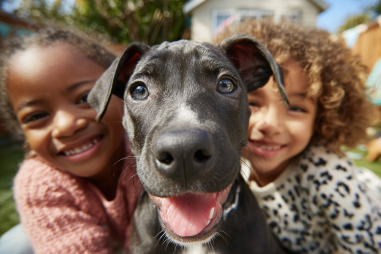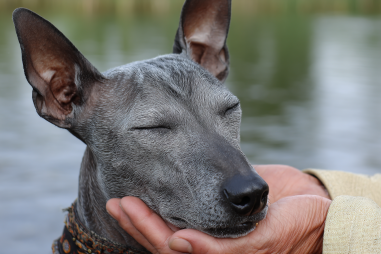The Xoloitzcuintli, often affectionately called the Xolo or Mexican Hairless Dog, is a breed steeped in history and known for its loyal and calm demeanor. Despite their generally well-mannered nature, like all dogs, Xolos can occasionally develop behavioral issues if their emotional and social needs are not met correctly. Recognizing these common challenges early on and understanding how to address them can ensure your Xolo remains a happy, balanced companion.
Overview of Behavioral Tendencies
The Xoloitzcuintli is renowned for its strong bond with family members, intelligence, and relatively calm disposition. They tend to be alert and observant, exhibiting a natural protective instinct, but are not typically aggressive without cause. While Xolos are generally friendly, they often show a degree of aloofness toward strangers, reflecting their ancient heritage as guardian dogs. This reserved behavior can sometimes be mistaken for shyness or standoffishness, but it usually stems from their cautious and discerning nature.
Moreover, Xolos are known for being independent and intelligent, which means they may sometimes come across as stubborn during training or daily interactions. Their deep loyalty and sensitivity also mean they respond best to gentle, consistent communication rather than harsh discipline.
Common Issues like Shyness, Aloofness, or Stubbornness
While the Xoloitzcuintli is generally steady-natured, some owners may encounter behavioral traits that pose challenges:
- Shyness: Some Xolos may initially appear timid or hesitant, especially around new people or environments. Without proper socialization, this shyness can develop into anxiety or fear-based behaviors.
- Aloofness: Their natural suspicion of strangers can sometimes translate into aloofness, making it difficult for them to warm up to visitors or other animals.
- Stubbornness: Xolos can be independent thinkers and sometimes resist commands or training efforts if they don’t understand the reason or if training methods are too forceful.
- Protectiveness: While protective behavior is generally positive, if unchecked, it can lead to excessive barking or defensive aggression toward unfamiliar people or dogs.
Causes of Behavioral Problems
Understanding the root causes of behavioral problems in Xoloitzcuintlis is key to addressing them effectively. Common factors contributing to issues include:
- Lack of socialization: Because Xolos can be naturally cautious, insufficient exposure to varied people, animals, and environments during their early life stages may increase fear or shyness.
- Inconsistent training: Irregular or harsh training methods can confuse an intelligent breed like the Xolo, leading to stubborn or rebellious behavior.
- Boredom and lack of stimulation: Xolos need mental and physical exercise; without these, they may develop destructive habits or become restless.
- Separation anxiety: Their strong attachment to their families means they can develop anxiety when left alone for extended periods.
- Health issues: Sometimes behavioral changes can signal underlying health problems, so regular veterinary check-ups are essential.
Training and Socialization to Prevent Problems
Prevention is always better than cure when it comes to behavioral issues. The best time to start working with a Xoloitzcuintli is during puppyhood, but adult dogs can benefit from proper training and socialization as well. Here are some effective approaches:
- Early socialization: Introduce your Xolo to various people, environments, and other animals gradually and positively. This helps build confidence and reduces fear or aloofness later in life.
- Consistent training: Establish clear, consistent commands and routines. Xolos respond well to patience and reward-based training, which encourages engagement and reduces stubborn resistance.
- Mental stimulation: Use puzzle toys, training games, and new experiences to keep your dog mentally sharp and prevent boredom-related behaviors.
- Exercise: Ensure your Xolo receives enough physical activity according to their energy levels, supporting a calm and balanced temperament.
- Gentle leadership: Avoid harsh corrections; instead, reinforce positive behaviors and redirect unwanted ones with kindness and clarity.
Handling Separation Anxiety
Separation anxiety can affect many dogs, but the deeply bonded Xoloitzcuintli may be especially vulnerable. Signs of separation anxiety may include incessant barking, destructive behavior, excessive licking, or attempts to escape when left alone.
To mitigate this:
- Gradual desensitization: Slowly get your dog accustomed to being alone in short increments, gradually increasing the duration as they become more comfortable.
- Safe, comforting environment: Provide a cozy space with favorite toys or blanket to help your dog feel secure.
- Consistent departure cues: Maintain a calm, low-key routine when leaving or returning to reduce emotional extremes.
- Interactive toys: Use puzzle feeders or treat-stuffed toys to divert their attention during alone time.
- Consultation: In severe cases, professional intervention or medication may be necessary to manage anxiety effectively.
When to Seek Professional Help
Sometimes, despite your best efforts, behavioral issues may persist or escalate. Recognizing when to seek help can save both you and your Xoloitzcuintli unnecessary stress. Consult a professional if you notice:
- Aggression that causes safety concerns
- Fear or anxiety that prevents normal functioning
- Persistent destructive or repetitive behaviors
- Difficulty in training progress despite consistent effort
- Changes in behavior that coincide with potential health problems
Professional dog trainers, behaviorists, or veterinary behaviorists can assess and develop tailored plans suited to your dog’s specific needs.
Tips for Positive Reinforcement and Consistency
Effective management of your Xoloitzcuintli’s behavior hinges on positive reinforcement and consistent interaction. Here are some practical tips to keep in mind:
- Reward desired behavior: Use treats, praise, or playtime as immediate rewards whenever your dog follows a command or behaves appropriately.
- Avoid punishment: Physical or verbal punishment can harm the trust bond and may worsen fear or stubbornness.
- Keep training sessions short and engaging: Frequent but brief training moments help maintain your dog’s attention without overwhelming them.
- Be patient and understanding: Recognize your dog’s signals and adapt your approach to their temperament and mood.
- Maintain routine: Dogs thrive on predictability, so consistent feeding, walking, and training times build a sense of security.
- Include family members: Ensure all household members use the same commands and reinforcement techniques to avoid confusion.
By fostering a positive training environment grounded in respect and consistency, your Xoloitzcuintli will flourish both behaviorally and emotionally.
Understanding and addressing common behavioral issues in your Xoloitzcuintli strengthens the special bond you share. With early socialization, thoughtful training, and compassionate management, this remarkable breed can thrive as a loyal and gentle companion, enriching your life with their unique presence.







